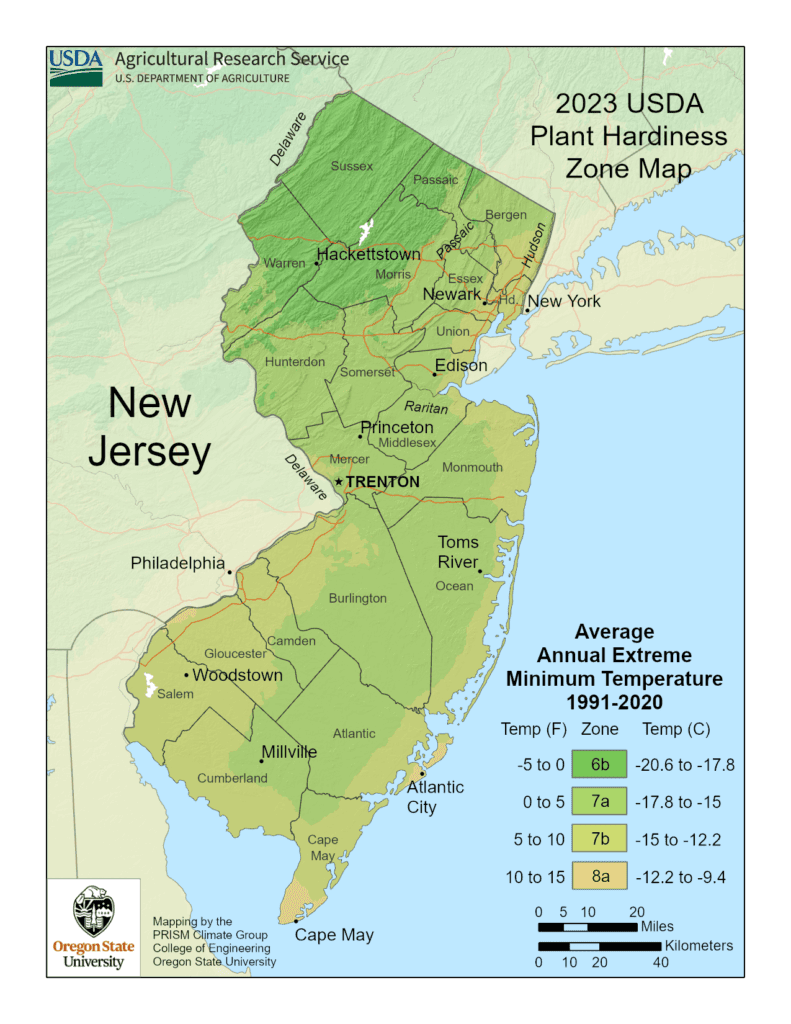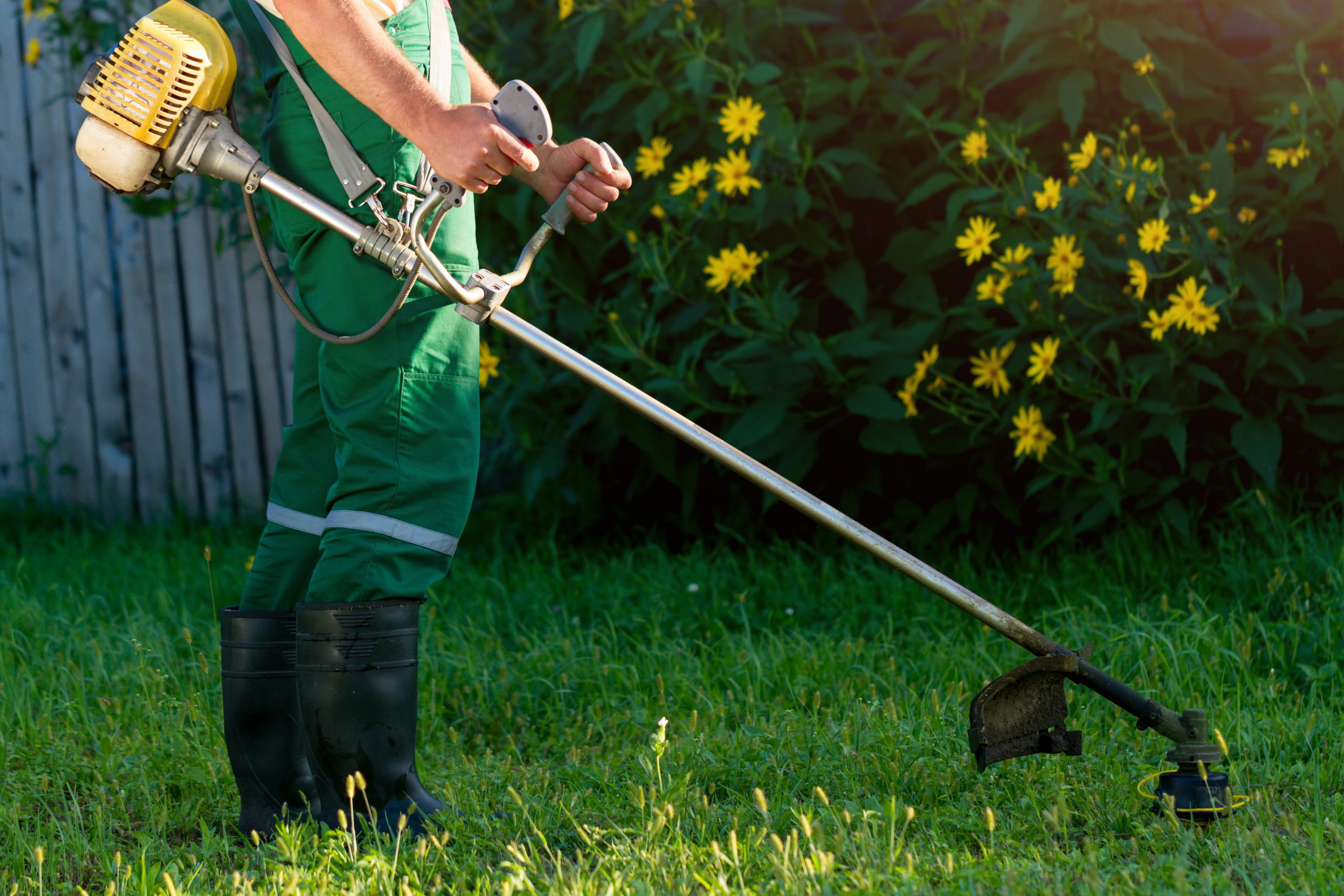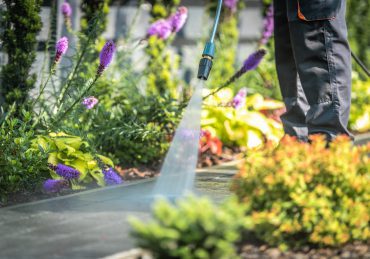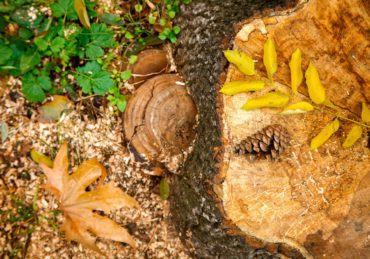Planting zones are geographic areas defined by climate conditions, especially winter temperatures, that guide what plants will thrive in each region. For New Jersey residents, gardeners, and landscapers, understanding these zones is crucial for successful planting. The USDA Plant Hardiness Zone Map is a key tool, providing detailed zone information based on average annual minimum temperatures. By using this map, New Jersey growers can select plants best suited for their specific zone, ensuring healthier gardens, landscapes, and long-term plant success.
Understanding New Jersey’s USDA Plant Hardiness Zones
The USDA Plant Hardiness Zones help homeowners understand which plants are more likely to thrive in their area, based on lowest average winter temperatures. These zones are essential tools for gardeners and landscapers, providing guidance on plant selection and care. Due to climate warming, the USDA updated the Plant Hardiness Zone Map, shifting many regions slightly warmer compared to previous versions. In New Jersey, this means the state now spans zones 6a, 6b, 7a, 7b, and even parts of 8a. Each zone represents a range of minimum winter temperatures, helping predict a plant’s ability to survive the coldest months. For example, zone 6a experiences minimums of -10°F to -5°F, while zone 8a sees minimums between 10°F and 15°F. Understanding these zones allows New Jersey homeowners to know which plants are better suited to their local climate, improving garden success and reducing the risk of winter damage.
New Jersey Planting Zone Map – Breaking Down the Regions

North Jersey Zones
In North Jersey, planting zones are mainly 6b in the western areas and 7a in the eastern parts. These regions experience cooler climates and shorter growing seasons compared to the rest of the state. Gardeners and landscapers must select cold-hardy plants that can handle lower winter temperatures and plan carefully around the shorter window for planting and harvesting.
Central Jersey Zones
Central New Jersey falls mostly within zone 7a, with warmer 7b zones found along the coast. This region enjoys moderate growing conditions, offering a balance between cold tolerance and a relatively long growing season. Homeowners and gardeners her can successfully grow a wide variety of plants, but should still choose varieties suited to occasional winter frosts and coastal weather influences.
South Jersey Zones
South Jersey features planting zones primarily in 7b, with areas near Cape May reaching into 8a. This regions enjoys longer growing seasons and milder winters, allowing for a broader range of plants, including some traditionally considered more southern varieties. Gardeners and landscapers can take advantage of the extended season to grow more diverse and heat-tolerant plants successfully.
How Climate Change is Shaping New Jersey’s Growing Zones
Climate warming has caused USDA Plant Hardiness Zones to shift northward, impacting gardening and landscaping across New Jersey. For example, Sussex County, traditionally in zone 6a, is now classified as 6b. This shift means that homeowners and gardeners can now consider a wider range of plants that previously might not have survived colder winters. However, it also brings challengers, such as increases risk of extreme weather, drought stress, and the spread of pests and plant diseases. As temperatures continue to rise, it’s essential to stay informed and adapt your planting choices and care routines accordingly. Proper seasonal lawn care becomes even more important to maintain healthy landscapes. For tips on adjusting your lawn care practices through the year, check out our guide to seasonal lawn care.
Why Planting Zones Matter for Your Garden or Landscape
Matching Plants to Your Hardiness Zone
Choosing plants that match your USDA zone is crucial for their survival and healthy growth. Plants suited to your zone can withstand the typical winter lows and thrive in local climate conditions. Selecting the right plants reduces the risk of winter damage, minimizes maintenance, and leads to more successful, resilient gardens and landscapes year after year.
The Role of Microclimates in Small Areas
Microclimates are small-area climate variations caused by factors like wind protection, slopes, or nearby bodies of water. These can make your local conditions warmer or cooler than the surrounding zone. Recognizing microclimates in your yard helps you choose plants more wisely and take advantage of unique growing conditions, leading to better plant health, growth, and gardening success.
Need Help Navigating New Jersey’s Planting Zones? LawnGuru Makes It Easy!
Understanding New Jersey’s USDA plant hardiness map helps homeowners select plants that will thrive in their local climate. New Jersey’s zones range from zone 6b in the northwest to 8a near Cape May. North Jersey has cooler zones and shorter seasons, Central Jersey offers moderate conditions, and South Jersey enjoys mild winters and longer growing periods. But caring for your yard doesn’t have to be complicated. LawnGuru makes lawn care, yard cleanups, and landscaping easy with same-day scheduling, fixed upfront pricing, and real-tie updates so you always know when your service is on the way. Whether you’re planting in 6b or maintaining a landscape in 8a, LawnGuru simplifies the process with reliable, on-demand services. Ready to take the stress out of your lawn and garden care? Book with LawnGuru today and keep your yard thriving in any New Jersey planting zone.




